Drug-Eluting Stents
Bare-Metal Stents
Bioabsorbable Stents
Metal Stents
Polymer Stents
Coated Stents
Hospitals
Ambulatory Surgical Centers
Cardiac Catheterization Labs
Coronary Artery Disease
Peripheral Artery Disease
Acute Myocardial Infarction
North America
Europe
South America
Asia Pacific
Middle East and Africa
North America Outlook (USD Billion, 2019-2035)
North America Coronary Stents Market by Type
Drug-Eluting Stents
Bare-Metal Stents
Bioabsorbable Stents
North America Coronary Stents Market by Material Type
Metal Stents
Polymer Stents
Coated Stents
North America Coronary Stents Market by End Use Type
Hospitals
Ambulatory Surgical Centers
Cardiac Catheterization Labs
North America Coronary Stents Market by Application Type
Coronary Artery Disease
Peripheral Artery Disease
Acute Myocardial Infarction
North America Coronary Stents Market by Regional Type
US
Canada
US Outlook (USD Billion, 2019-2035)
US Coronary Stents Market by Type
Drug-Eluting Stents
Bare-Metal Stents
Bioabsorbable Stents
US Coronary Stents Market by Material Type
Metal Stents
Polymer Stents
Coated Stents
US Coronary Stents Market by End Use Type
Hospitals
Ambulatory Surgical Centers
Cardiac Catheterization Labs
US Coronary Stents Market by Application Type
Coronary Artery Disease
Peripheral Artery Disease
Acute Myocardial Infarction
CANADA Outlook (USD Billion, 2019-2035)
CANADA Coronary Stents Market by Type
Drug-Eluting Stents
Bare-Metal Stents
Bioabsorbable Stents
CANADA Coronary Stents Market by Material Type
Metal Stents
Polymer Stents
Coated Stents
CANADA Coronary Stents Market by End Use Type
Hospitals
Ambulatory Surgical Centers
Cardiac Catheterization Labs
CANADA Coronary Stents Market by Application Type
Coronary Artery Disease
Peripheral Artery Disease
Acute Myocardial Infarction
Europe Outlook (USD Billion, 2019-2035)
Europe Coronary Stents Market by Type
Drug-Eluting Stents
Bare-Metal Stents
Bioabsorbable Stents
Europe Coronary Stents Market by Material Type
Metal Stents
Polymer Stents
Coated Stents
Europe Coronary Stents Market by End Use Type
Hospitals
Ambulatory Surgical Centers
Cardiac Catheterization Labs
Europe Coronary Stents Market by Application Type
Coronary Artery Disease
Peripheral Artery Disease
Acute Myocardial Infarction
Europe Coronary Stents Market by Regional Type
Germany
UK
France
Russia
Italy
Spain
Rest of Europe
GERMANY Outlook (USD Billion, 2019-2035)
GERMANY Coronary Stents Market by Type
Drug-Eluting Stents
Bare-Metal Stents
Bioabsorbable Stents
GERMANY Coronary Stents Market by Material Type
Metal Stents
Polymer Stents
Coated Stents
GERMANY Coronary Stents Market by End Use Type
Hospitals
Ambulatory Surgical Centers
Cardiac Catheterization Labs
GERMANY Coronary Stents Market by Application Type
Coronary Artery Disease
Peripheral Artery Disease
Acute Myocardial Infarction
UK Outlook (USD Billion, 2019-2035)
UK Coronary Stents Market by Type
Drug-Eluting Stents
Bare-Metal Stents
Bioabsorbable Stents
UK Coronary Stents Market by Material Type
Metal Stents
Polymer Stents
Coated Stents
UK Coronary Stents Market by End Use Type
Hospitals
Ambulatory Surgical Centers
Cardiac Catheterization Labs
UK Coronary Stents Market by Application Type
Coronary Artery Disease
Peripheral Artery Disease
Acute Myocardial Infarction
FRANCE Outlook (USD Billion, 2019-2035)
FRANCE Coronary Stents Market by Type
Drug-Eluting Stents
Bare-Metal Stents
Bioabsorbable Stents
FRANCE Coronary Stents Market by Material Type
Metal Stents
Polymer Stents
Coated Stents
FRANCE Coronary Stents Market by End Use Type
Hospitals
Ambulatory Surgical Centers
Cardiac Catheterization Labs
FRANCE Coronary Stents Market by Application Type
Coronary Artery Disease
Peripheral Artery Disease
Acute Myocardial Infarction
RUSSIA Outlook (USD Billion, 2019-2035)
RUSSIA Coronary Stents Market by Type
Drug-Eluting Stents
Bare-Metal Stents
Bioabsorbable Stents
RUSSIA Coronary Stents Market by Material Type
Metal Stents
Polymer Stents
Coated Stents
RUSSIA Coronary Stents Market by End Use Type
Hospitals
Ambulatory Surgical Centers
Cardiac Catheterization Labs
RUSSIA Coronary Stents Market by Application Type
Coronary Artery Disease
Peripheral Artery Disease
Acute Myocardial Infarction
ITALY Outlook (USD Billion, 2019-2035)
ITALY Coronary Stents Market by Type
Drug-Eluting Stents
Bare-Metal Stents
Bioabsorbable Stents
ITALY Coronary Stents Market by Material Type
Metal Stents
Polymer Stents
Coated Stents
ITALY Coronary Stents Market by End Use Type
Hospitals
Ambulatory Surgical Centers
Cardiac Catheterization Labs
ITALY Coronary Stents Market by Application Type
Coronary Artery Disease
Peripheral Artery Disease
Acute Myocardial Infarction
SPAIN Outlook (USD Billion, 2019-2035)
SPAIN Coronary Stents Market by Type
Drug-Eluting Stents
Bare-Metal Stents
Bioabsorbable Stents
SPAIN Coronary Stents Market by Material Type
Metal Stents
Polymer Stents
Coated Stents
SPAIN Coronary Stents Market by End Use Type
Hospitals
Ambulatory Surgical Centers
Cardiac Catheterization Labs
SPAIN Coronary Stents Market by Application Type
Coronary Artery Disease
Peripheral Artery Disease
Acute Myocardial Infarction
REST OF EUROPE Outlook (USD Billion, 2019-2035)
REST OF EUROPE Coronary Stents Market by Type
Drug-Eluting Stents
Bare-Metal Stents
Bioabsorbable Stents
REST OF EUROPE Coronary Stents Market by Material Type
Metal Stents
Polymer Stents
Coated Stents
REST OF EUROPE Coronary Stents Market by End Use Type
Hospitals
Ambulatory Surgical Centers
Cardiac Catheterization Labs
REST OF EUROPE Coronary Stents Market by Application Type
Coronary Artery Disease
Peripheral Artery Disease
Acute Myocardial Infarction
APAC Outlook (USD Billion, 2019-2035)
APAC Coronary Stents Market by Type
Drug-Eluting Stents
Bare-Metal Stents
Bioabsorbable Stents
APAC Coronary Stents Market by Material Type
Metal Stents
Polymer Stents
Coated Stents
APAC Coronary Stents Market by End Use Type
Hospitals
Ambulatory Surgical Centers
Cardiac Catheterization Labs
APAC Coronary Stents Market by Application Type
Coronary Artery Disease
Peripheral Artery Disease
Acute Myocardial Infarction
APAC Coronary Stents Market by Regional Type
China
India
Japan
South Korea
Malaysia
Thailand
Indonesia
Rest of APAC
CHINA Outlook (USD Billion, 2019-2035)
CHINA Coronary Stents Market by Type
Drug-Eluting Stents
Bare-Metal Stents
Bioabsorbable Stents
CHINA Coronary Stents Market by Material Type
Metal Stents
Polymer Stents
Coated Stents
CHINA Coronary Stents Market by End Use Type
Hospitals
Ambulatory Surgical Centers
Cardiac Catheterization Labs
CHINA Coronary Stents Market by Application Type
Coronary Artery Disease
Peripheral Artery Disease
Acute Myocardial Infarction
INDIA Outlook (USD Billion, 2019-2035)
INDIA Coronary Stents Market by Type
Drug-Eluting Stents
Bare-Metal Stents
Bioabsorbable Stents
INDIA Coronary Stents Market by Material Type
Metal Stents
Polymer Stents
Coated Stents
INDIA Coronary Stents Market by End Use Type
Hospitals
Ambulatory Surgical Centers
Cardiac Catheterization Labs
INDIA Coronary Stents Market by Application Type
Coronary Artery Disease
Peripheral Artery Disease
Acute Myocardial Infarction
JAPAN Outlook (USD Billion, 2019-2035)
JAPAN Coronary Stents Market by Type
Drug-Eluting Stents
Bare-Metal Stents
Bioabsorbable Stents
JAPAN Coronary Stents Market by Material Type
Metal Stents
Polymer Stents
Coated Stents
JAPAN Coronary Stents Market by End Use Type
Hospitals
Ambulatory Surgical Centers
Cardiac Catheterization Labs
JAPAN Coronary Stents Market by Application Type
Coronary Artery Disease
Peripheral Artery Disease
Acute Myocardial Infarction
SOUTH KOREA Outlook (USD Billion, 2019-2035)
SOUTH KOREA Coronary Stents Market by Type
Drug-Eluting Stents
Bare-Metal Stents
Bioabsorbable Stents
SOUTH KOREA Coronary Stents Market by Material Type
Metal Stents
Polymer Stents
Coated Stents
SOUTH KOREA Coronary Stents Market by End Use Type
Hospitals
Ambulatory Surgical Centers
Cardiac Catheterization Labs
SOUTH KOREA Coronary Stents Market by Application Type
Coronary Artery Disease
Peripheral Artery Disease
Acute Myocardial Infarction
MALAYSIA Outlook (USD Billion, 2019-2035)
MALAYSIA Coronary Stents Market by Type
Drug-Eluting Stents
Bare-Metal Stents
Bioabsorbable Stents
MALAYSIA Coronary Stents Market by Material Type
Metal Stents
Polymer Stents
Coated Stents
MALAYSIA Coronary Stents Market by End Use Type
Hospitals
Ambulatory Surgical Centers
Cardiac Catheterization Labs
MALAYSIA Coronary Stents Market by Application Type
Coronary Artery Disease
Peripheral Artery Disease
Acute Myocardial Infarction
THAILAND Outlook (USD Billion, 2019-2035)
THAILAND Coronary Stents Market by Type
Drug-Eluting Stents
Bare-Metal Stents
Bioabsorbable Stents
THAILAND Coronary Stents Market by Material Type
Metal Stents
Polymer Stents
Coated Stents
THAILAND Coronary Stents Market by End Use Type
Hospitals
Ambulatory Surgical Centers
Cardiac Catheterization Labs
THAILAND Coronary Stents Market by Application Type
Coronary Artery Disease
Peripheral Artery Disease
Acute Myocardial Infarction
INDONESIA Outlook (USD Billion, 2019-2035)
INDONESIA Coronary Stents Market by Type
Drug-Eluting Stents
Bare-Metal Stents
Bioabsorbable Stents
INDONESIA Coronary Stents Market by Material Type
Metal Stents
Polymer Stents
Coated Stents
INDONESIA Coronary Stents Market by End Use Type
Hospitals
Ambulatory Surgical Centers
Cardiac Catheterization Labs
INDONESIA Coronary Stents Market by Application Type
Coronary Artery Disease
Peripheral Artery Disease
Acute Myocardial Infarction
REST OF APAC Outlook (USD Billion, 2019-2035)
REST OF APAC Coronary Stents Market by Type
Drug-Eluting Stents
Bare-Metal Stents
Bioabsorbable Stents
REST OF APAC Coronary Stents Market by Material Type
Metal Stents
Polymer Stents
Coated Stents
REST OF APAC Coronary Stents Market by End Use Type
Hospitals
Ambulatory Surgical Centers
Cardiac Catheterization Labs
REST OF APAC Coronary Stents Market by Application Type
Coronary Artery Disease
Peripheral Artery Disease
Acute Myocardial Infarction
South America Outlook (USD Billion, 2019-2035)
South America Coronary Stents Market by Type
Drug-Eluting Stents
Bare-Metal Stents
Bioabsorbable Stents
South America Coronary Stents Market by Material Type
Metal Stents
Polymer Stents
Coated Stents
South America Coronary Stents Market by End Use Type
Hospitals
Ambulatory Surgical Centers
Cardiac Catheterization Labs
South America Coronary Stents Market by Application Type
Coronary Artery Disease
Peripheral Artery Disease
Acute Myocardial Infarction
South America Coronary Stents Market by Regional Type
Brazil
Mexico
Argentina
Rest of South America
BRAZIL Outlook (USD Billion, 2019-2035)
BRAZIL Coronary Stents Market by Type
Drug-Eluting Stents
Bare-Metal Stents
Bioabsorbable Stents
BRAZIL Coronary Stents Market by Material Type
Metal Stents
Polymer Stents
Coated Stents
BRAZIL Coronary Stents Market by End Use Type
Hospitals
Ambulatory Surgical Centers
Cardiac Catheterization Labs
BRAZIL Coronary Stents Market by Application Type
Coronary Artery Disease
Peripheral Artery Disease
Acute Myocardial Infarction
MEXICO Outlook (USD Billion, 2019-2035)
MEXICO Coronary Stents Market by Type
Drug-Eluting Stents
Bare-Metal Stents
Bioabsorbable Stents
MEXICO Coronary Stents Market by Material Type
Metal Stents
Polymer Stents
Coated Stents
MEXICO Coronary Stents Market by End Use Type
Hospitals
Ambulatory Surgical Centers
Cardiac Catheterization Labs
MEXICO Coronary Stents Market by Application Type
Coronary Artery Disease
Peripheral Artery Disease
Acute Myocardial Infarction
ARGENTINA Outlook (USD Billion, 2019-2035)
ARGENTINA Coronary Stents Market by Type
Drug-Eluting Stents
Bare-Metal Stents
Bioabsorbable Stents
ARGENTINA Coronary Stents Market by Material Type
Metal Stents
Polymer Stents
Coated Stents
ARGENTINA Coronary Stents Market by End Use Type
Hospitals
Ambulatory Surgical Centers
Cardiac Catheterization Labs
ARGENTINA Coronary Stents Market by Application Type
Coronary Artery Disease
Peripheral Artery Disease
Acute Myocardial Infarction
REST OF SOUTH AMERICA Outlook (USD Billion, 2019-2035)
REST OF SOUTH AMERICA Coronary Stents Market by Type
Drug-Eluting Stents
Bare-Metal Stents
Bioabsorbable Stents
REST OF SOUTH AMERICA Coronary Stents Market by Material Type
Metal Stents
Polymer Stents
Coated Stents
REST OF SOUTH AMERICA Coronary Stents Market by End Use Type
Hospitals
Ambulatory Surgical Centers
Cardiac Catheterization Labs
REST OF SOUTH AMERICA Coronary Stents Market by Application Type
Coronary Artery Disease
Peripheral Artery Disease
Acute Myocardial Infarction
MEA Outlook (USD Billion, 2019-2035)
MEA Coronary Stents Market by Type
Drug-Eluting Stents
Bare-Metal Stents
Bioabsorbable Stents
MEA Coronary Stents Market by Material Type
Metal Stents
Polymer Stents
Coated Stents
MEA Coronary Stents Market by End Use Type
Hospitals
Ambulatory Surgical Centers
Cardiac Catheterization Labs
MEA Coronary Stents Market by Application Type
Coronary Artery Disease
Peripheral Artery Disease
Acute Myocardial Infarction
MEA Coronary Stents Market by Regional Type
GCC Countries
South Africa
Rest of MEA
GCC COUNTRIES Outlook (USD Billion, 2019-2035)
GCC COUNTRIES Coronary Stents Market by Type
Drug-Eluting Stents
Bare-Metal Stents
Bioabsorbable Stents
GCC COUNTRIES Coronary Stents Market by Material Type
Metal Stents
Polymer Stents
Coated Stents
GCC COUNTRIES Coronary Stents Market by End Use Type
Hospitals
Ambulatory Surgical Centers
Cardiac Catheterization Labs
GCC COUNTRIES Coronary Stents Market by Application Type
Coronary Artery Disease
Peripheral Artery Disease
Acute Myocardial Infarction
SOUTH AFRICA Outlook (USD Billion, 2019-2035)
SOUTH AFRICA Coronary Stents Market by Type
Drug-Eluting Stents
Bare-Metal Stents
Bioabsorbable Stents
SOUTH AFRICA Coronary Stents Market by Material Type
Metal Stents
Polymer Stents
Coated Stents
SOUTH AFRICA Coronary Stents Market by End Use Type
Hospitals
Ambulatory Surgical Centers
Cardiac Catheterization Labs
SOUTH AFRICA Coronary Stents Market by Application Type
Coronary Artery Disease
Peripheral Artery Disease
Acute Myocardial Infarction
REST OF MEA Outlook (USD Billion, 2019-2035)
REST OF MEA Coronary Stents Market by Type
Drug-Eluting Stents
Bare-Metal Stents
Bioabsorbable Stents
REST OF MEA Coronary Stents Market by Material Type
Metal Stents
Polymer Stents
Coated Stents
REST OF MEA Coronary Stents Market by End Use Type
Hospitals
Ambulatory Surgical Centers
Cardiac Catheterization Labs
REST OF MEA Coronary Stents Market by Application Type
Coronary Artery Disease
Peripheral Artery Disease
Acute Myocardial Infarction
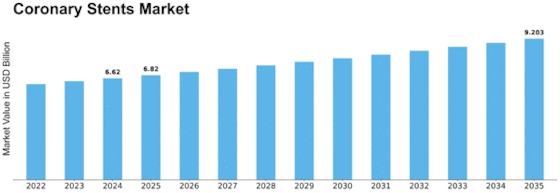

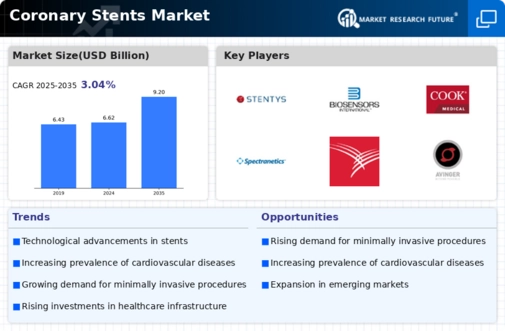
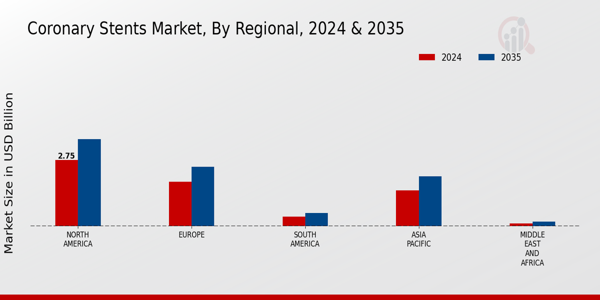


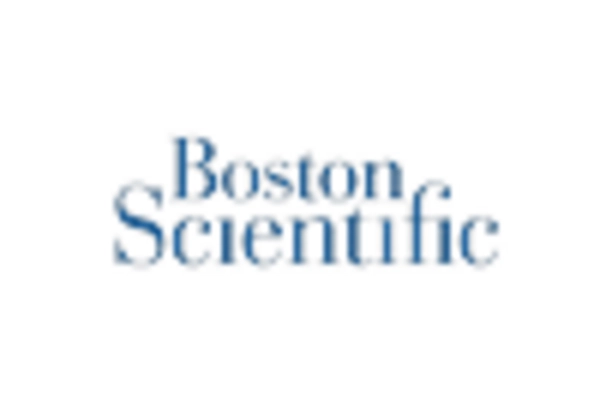

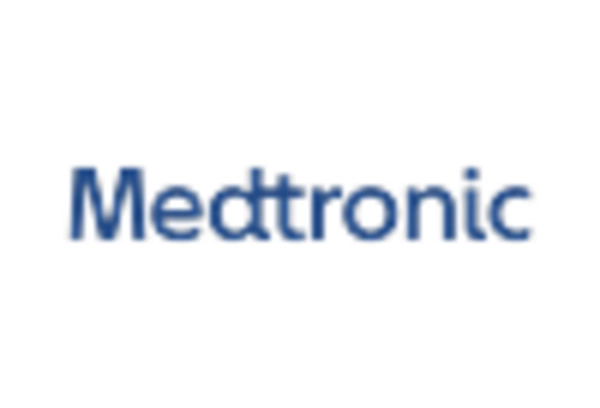
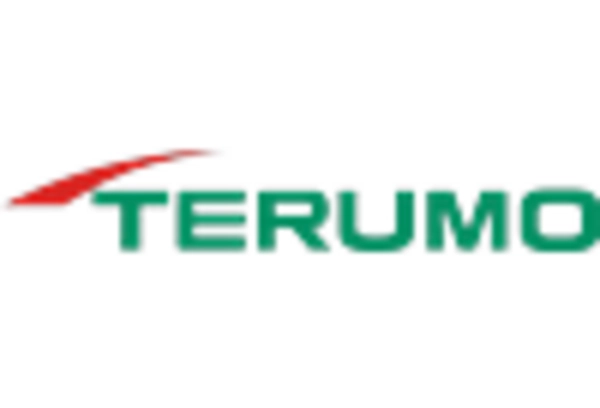

Leave a Comment